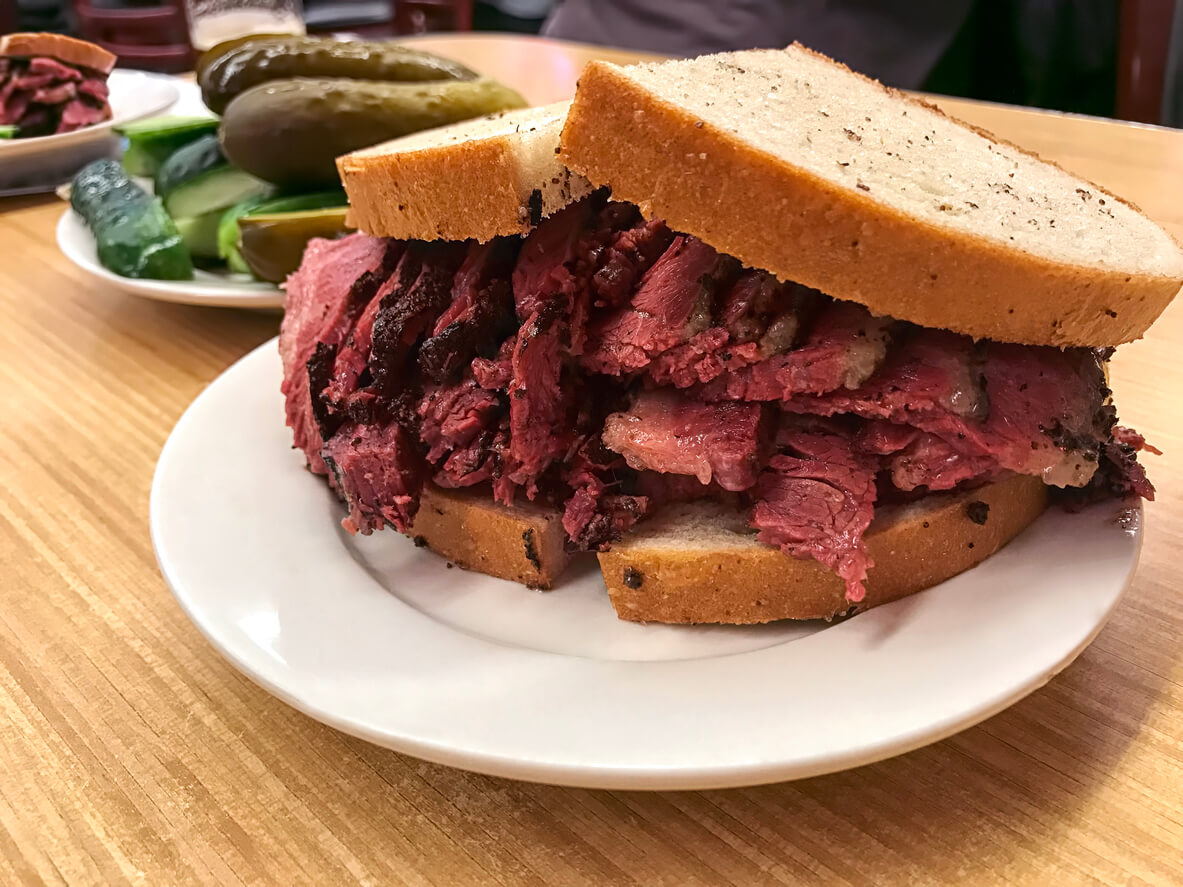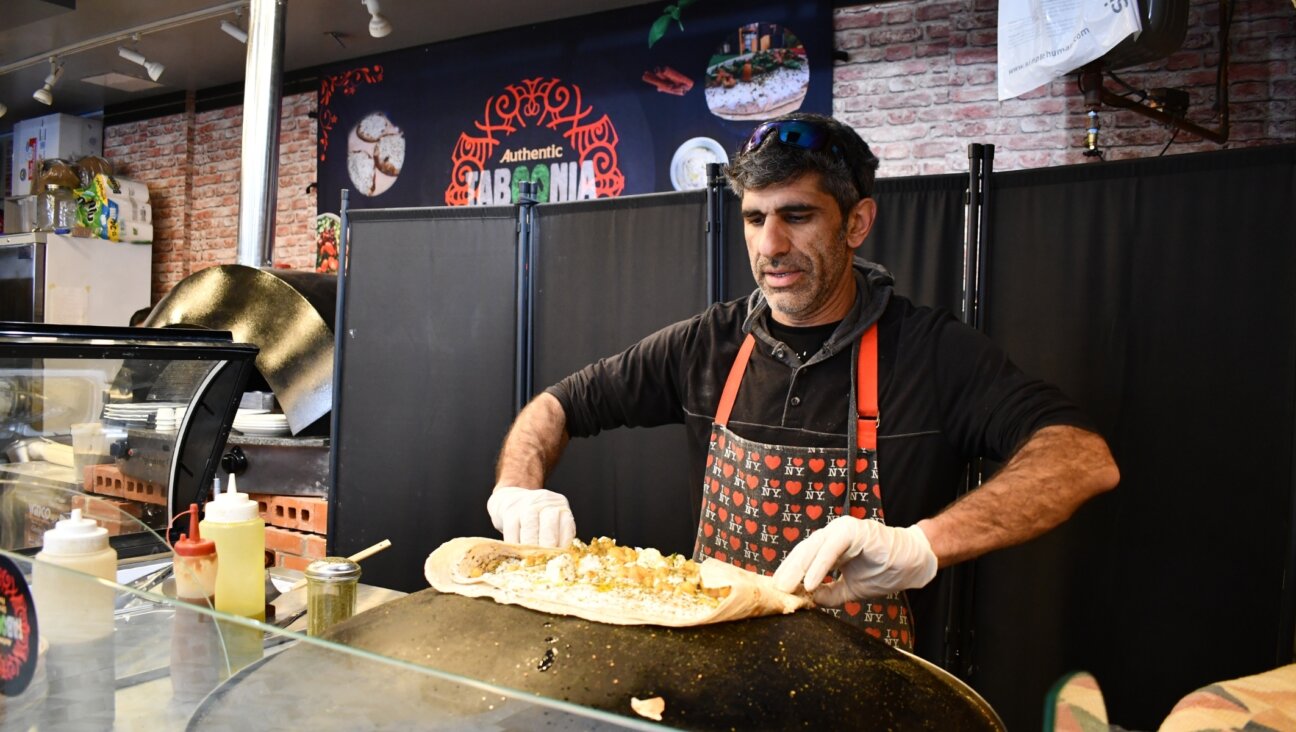Worried your dinner isn’t kosher? This pocket gizmo claims it’ll figure it out
A device that scans the light signature of food can be yours for the low cost of $10,000

Is this delicious pastrami sandwich kosher? A handheld device can give you the answer. Photo by gerenme/iStock
You’re about to sit down to a delicious chicken dinner, the aroma is making you salivate, and just as you’re about to dig in, you’re seized with doubt: Is this food kosher?
While not a likely scenario, Jews who are looking for a bit more certainty on their meals being halachically correct can be forgiven for wishing there were a way to know for sure if the food is kosher.
But that device is not only real, it’s patented and currently on the market for somewhere north of $10,000 per unit.
In December, a patent application was filed for “spectroscopic classification of conformance with dietary restrictions.” The filing was just the latest in a string stretching back to 2016 for a device that would use a spectroscope — an optical sensor that measures the properties of light — to determine whether food is kosher (or halal).
The patent was filed by an employee of VIAVI Solutions, a company that manufactures testing and monitoring equipment.
The technology has already been incorporated into some of the company’s devices, although so far, it hasn’t been widely marketed for the purpose of examining whether something is kosher. Rather, it is used to verify the properties of raw materials used in pharmaceuticals, narcotics, explosives, tobacco and meat and dairy products.
Emiliano Genorini, an account manager with VIAVI, said one example of the technology’s use is for supermarkets “to check if the fish is really a fresh fish, or is it frozen and unfrozen?”
The devices made by VIAVI work by emitting near-infrared light and then “basically, this light goes onto a sample,” said Genorini. The wavelengths of light are absorbed differently depending on the sample. The properties of that light are then shared to a database by a Bluetooth connection and compared to a standard or prototype to see how they measure up.
For example, it can be hard to tell with the naked eye what kind of animal ground meat originated from, or whether kosher butchering protocols were followed. But kosher slaughter methods and non-kosher methods can affect the muscles of an animal in different ways, and those properties can be stored in the database. By shining the light on a sample of meat, the device can compare it to properties in the database and, using a simple artificial intelligence algorithm, determine if the meat is kosher or not.
The technique is similar to looking for and comparing “the fingerprint of your thumbs,” said Genorini.
“Already now, from the technological point of view, you can have a device that costs $10,000 you connect to your mobile phone, you go to the restaurant, you scan the meat, you see if it’s kosher or not,” he said.
Genorini pointed out that it wasn’t that many years ago that the same technology was selling for eight times as much. But he acknowledged that it’s still too expensive for the average person to pop a spectrometer in their pocket, link it to their iPhone and take it to the grocery store or restaurant if they’re feeling a little paranoid about what they’re eating. The Italian Genorini compared it to his own trips to restaurants.
“I like to have good pizza and good pasta. But believe me, I won’t pay $10,000 for a system that tells me how many calories are in the pizza.”
























